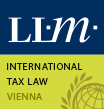The University Act provides for a total of 90 ECTS for the LL.M. program. The program is divided into eight blocks of lectures and comprises the following subjects:
Anti-avoidance measures
-
Comparative Aspects of CFC Rules
The past two decades have seen a dramatic increase in the number of countries adopting controlled foreign corporation rules (CFC rules). Despite a conceptual connection to the domestic ”tax shelter” problem, CFC rules tend to apply only in an international setting. Further, the manner in which these rules are implemented from country to country shows a lack of uniformity. These features raise serious questions as regards the interaction between CFC rules and tax treaties and EU law. The main objective of this course is to gain an understanding of the policy underlying CFC rules, particularly within a broader conceptual perspective. The course will explore from a comparative view the approaches that countries take in implementing CFC rules. It will also explore the core issues that CFC rules raise in the context of tax treaties and EU law.
-
Limits to Tax Planning in European Tax Law
Tax law contains many anti-abuse provisions. In the European Union these provisions must be in accordance with Community law. Accordingly, further study of abuse concepts in European tax law is useful and desirable. This course will deal with the creation of and the content of the abuse concepts. The starting point of the discussion will be the ECJ’s case law on abuse of Community law in non-tax matters. Thereafter, the focus will be on abuse in direct and indirect taxation in the EU. We shall discuss how the European Court of Justice treats abuse, the differences and similarities between the various abuse concepts and hence to what extent tax jurisdiction shopping is still allowed. In the second part of the lecture we shall discuss the relevant EU directives to curtail international tax avoidance and the various proposals made by the EU Commission in this regard.
-
Transfer Pricing
Transfer pricing is one of the most relevant and challenging topics in the international tax environment. The increasing global trade and the role of multinational enterprises in the global economy have boosted the importance of this topic. This lecture will provide the students with the fundamental tools to understand transfer pricing topics and the arm’s length principle, both from a legal and an economic perspective. The theoretical analysis will be supported by examples and cases coming from practice. Particular focus will be given to the relevance of the comparability analysis in light of the new approach envisaged by the BEPS Report on Actions 8, 9 and 10 and an overview on the selection of the most appropriate transfer pricing methods.
-
U.S. International Anti-Avoidance Rules
The United States recently overhauled its international tax system, nominally moving from a worldwide to a territorial system. In reality, however, the new tax law is nuanced and extremely complex, incorporating both territorial and worldwide elements. In addition, the adoption of a participation exemption regime required U.S. Congress to adopt new anti-abuse rules, and to revamp certain existing anti-abuse rules, in order to prevent income shifting. The course will try to untangle some of these complexities, by exploring U.S. international tax anti-avoidance doctrines in light of the new law. We will discuss general US anti-avoidance policies as well the various particular mechanisms to fight both inbound and outbound tax avoidance, including CFC rules, LOB provisions, the new rules relating to Global Intangible Low-Taxed Income (GILTI), the new anti-mismatch rules, the new Base Erosion Anti-abuse Tax (BEAT), and anti-conduit financing rules.
-
Value Creation and Taxation
According to the OECD, Amount A of Pillar 1 aims at ensuring a fairer distribution of profits and taxing rights among countries with respect to the largest MNEs. What started as a project to address the tax challenges of the digital economy under BEPS Action 1, including the difficulty of determining the jurisdiction in which value creation occurs, has the potential to reshape the international tax system as we know it. While traditionally tax treaties allocate business profits based on the permanent establishment principle, focusing on the supply-side of value creation, Amount A would re-allocate some taxing rights over MNEs to the markets, regardless of whether the MNEs have a physical presence there. How would the rules of Amount A achieve that? What alternatives exist to Amount A and are those alternatives, particularly Article 12B of the UN Model and DSTs, better suited to ensure taxation where value is created? To what extent is value created in the markets without physical presence? What is the required nexus to the markets? Which practical challenges do these measures face? The aim of the course is to address those questions.
« Back to list

